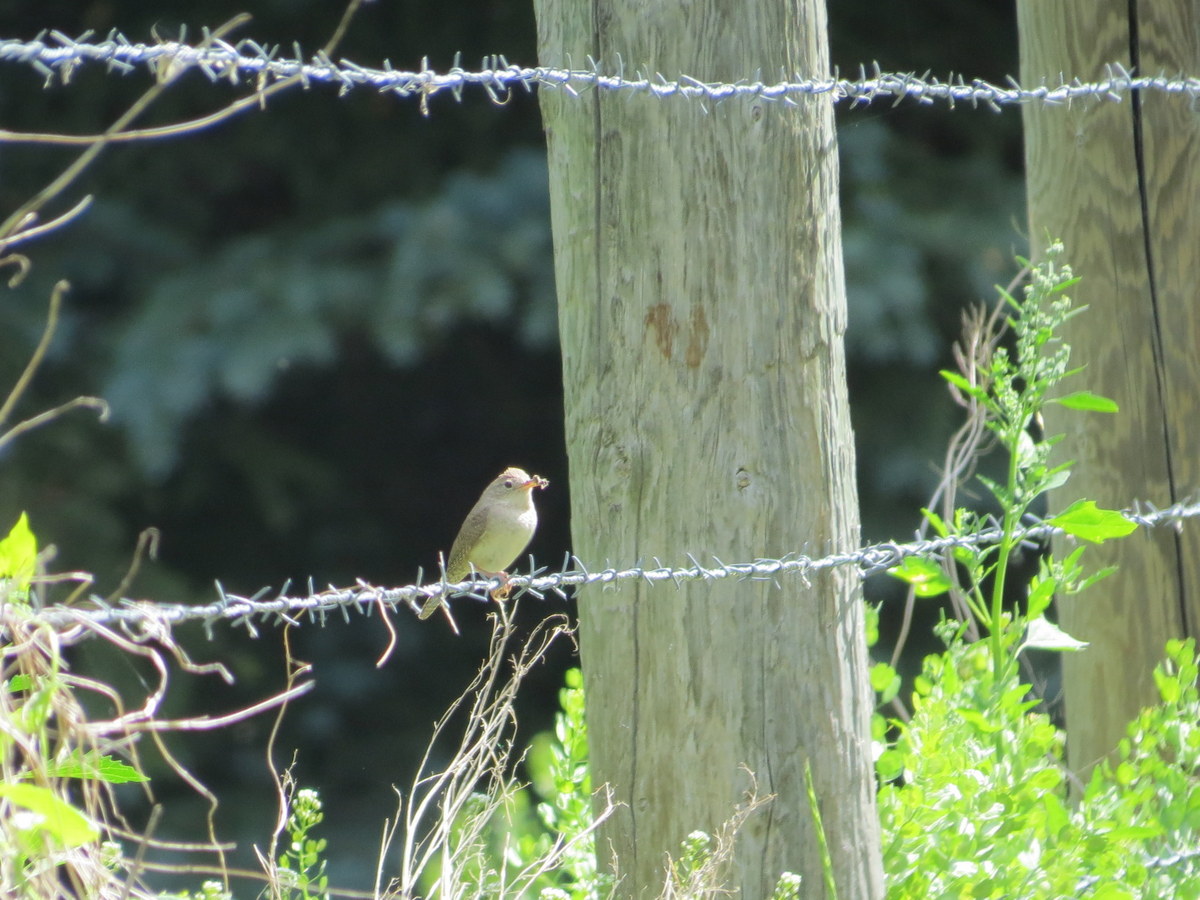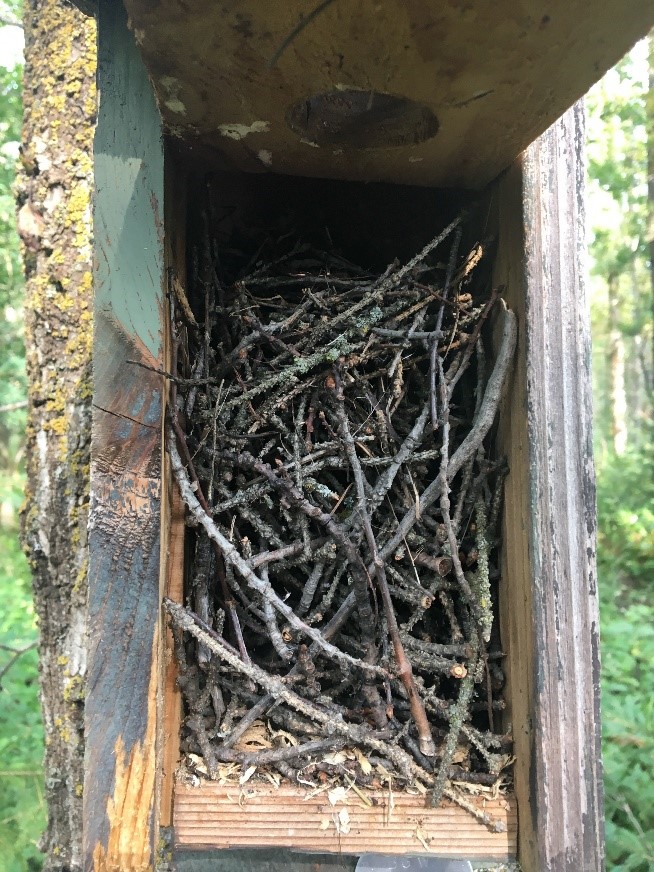In an increasingly urbanized landscape, our wildlife sometimes need a little extra help to thrive. As we continue to replace forests with human development, birds that rely on old trees and their cavities (often referred to as cavity nesters) are left with limited options to lay their eggs. Some birds, such as woodpeckers, can excavate their own holes with their robust beaks, but many smaller species such as house wrens and tree swallows seek already excavated cavities. With overall fewer trees and fewer available cavities, installing nest boxes on your land is a fantastic way to provide additional nesting habitat for these birds. With over 200 nest boxes across our properties, EALT is committed to this effort.
While simply supplying nest boxes is a wonderful start, the annual maintenance of these boxes can also be of great benefit to your local birds. Regular maintenance in the fall can help to reduce mites and disease, as well as promote nest box use in the following year. Some birds will clean out cavities or boxes from the previous year, but many birds will not - why not make it easier for everyone?
When doing nest box maintenance, it is good practice to inspect each nest box to ensure that nothing has fallen down or rotted over the course of the year. We check each box for protruding screws or nails that could potentially hurt nesting birds, and obvious cracks or holes that could allow rainwater to seep in and soak the nest. Once confirming that the box is structurally sound (and no longer being used by any critters!) we remove all the nesting material and sweep out the box to remove any remaining pests. Once it is clean, wood shavings can be added to encourage some species to nest there, ie. waterfowl and owls.
Last summer, I completed an internship at the Beaverhill Bird Observatory monitoring and maintaining house wren nest boxes. The experience was very fulfilling, and I was excited for the opportunity to help with EALT’s nest boxes this summer as the Nest Box Conservation Intern. Over the course of a couple weeks this August, EALT staff and volunteers cleaned over 150 boxes at 6 conservation lands. EALT lands host a variety of nest boxes differing in size and structure that are intended for different species – namely waterfowl, owl, house wren/chickadee, bluebird/ tree swallows, and woodpeckers.
Many of our nest boxes were dominated by a select few species, primarily house wrens and tree swallows. These birds are common nest box inhabitants in our aspen parkland region, and their nests are easy and fun to identify! House wrens build their nests by stacking small twigs up the box column. Once the sticks are at a satisfactory height, wrens will often line a cup with feathers or grass to lay their speckled, brown-pink eggs. Tree swallow nests are characterized by an abundance of dried grass in which white eggs are laid in a cup and covered with feathers. During the nesting season, you might also realize that tree swallows are inhabiting a box because swallow moms tend to fiercely defend their babies if you get too close!
Overall, there is something incredibly rewarding about the maintenance of nest boxes; a thrill in opening the box and deducing what species inhabited it for the season, accompanied by a sense of pride that comes with knowing you provided habitat for so many birds. I am grateful that this internship allowed me to reconnect with local bird species on EALT’s protected natural areas.
By: Nikki Paskar, SCiP Bird Nest Box Conservation Intern





